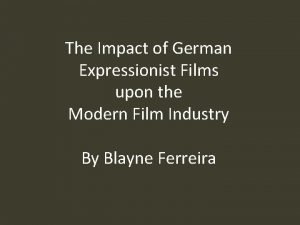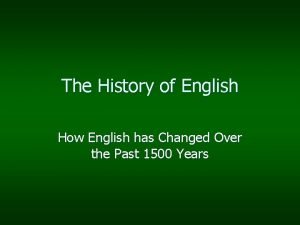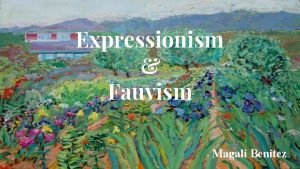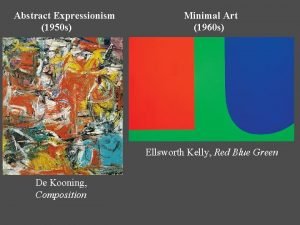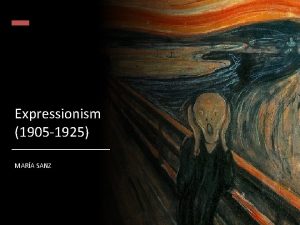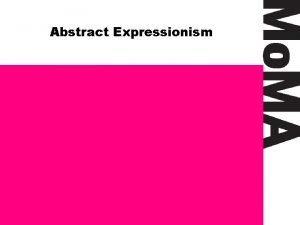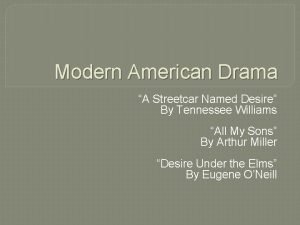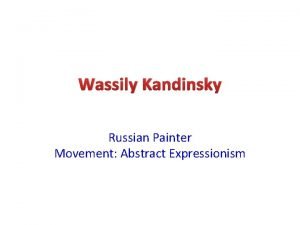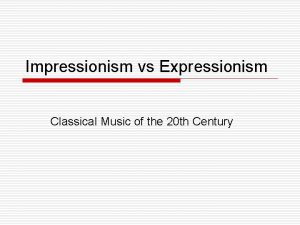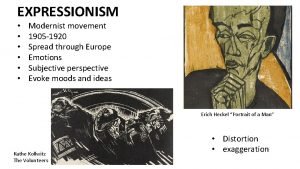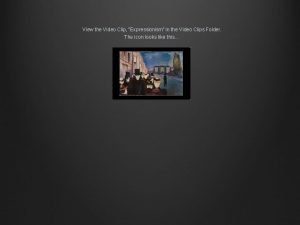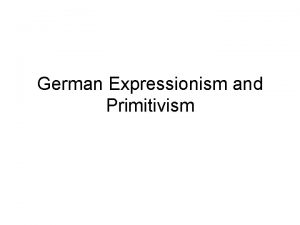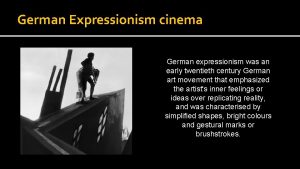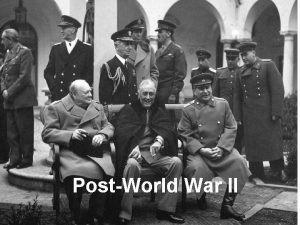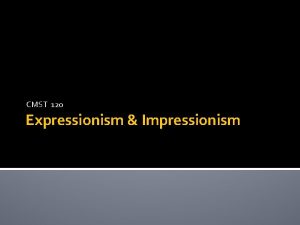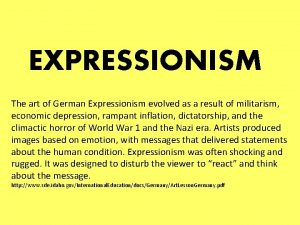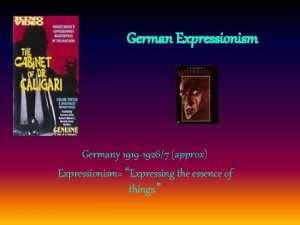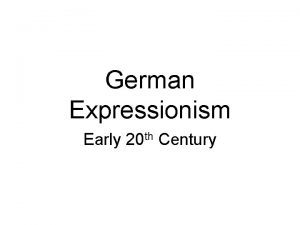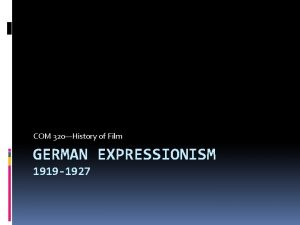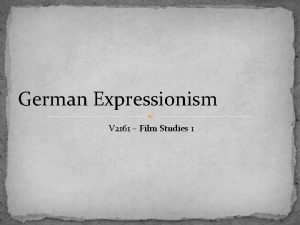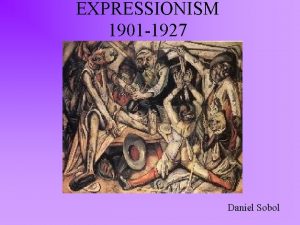POSTWORLD WAR I FILM IN EUROPE German Expressionism












- Slides: 12

POST-WORLD WAR I FILM IN EUROPE • German Expressionism • 1919 -1933 • Soviet Montage • ~1924 -1930 • French Avant-Garde • 1918 -1930

1919 -1933 PRESENTATION BY CHRIS SCHLOEMP GERMAN EXPRESSIONISM

HISTORICAL BACKGROUND • 1919 • Weimar government wanted to revitalize the film industry • give Germany new image • subsidized film – allowed Germany to compete with other countries • ranked 2 nd (to Hollywood) technically, in influence, and in popularity by mid-20 s

BY 1933… • Control tightened over the industry • many German film makers left for the US

ARTISTIC BACKGROUND • A work of art where the representation of reality is distorted in order to convey the “inner vision” • the “essence of things, ” rather than the way things appear • Relied on symbolism and artistic imagery

KEY FEATURES OF GERMAN EXPRESSIONISTIC FILM • Emphasis on shapes, forms, and patterns • distorted and/or exaggerated settings • use of oblique angles and nonparallel lines • Hypnotic and nightmarish worlds • Unnatural costumes, hairstyles, and make-up • Highly stylized acting • Most important aspect: • Mise-en-scene

MISE-EN-SCÈNE… • French term, literally: "put in the scene. " • For film, refers to almost everything that goes into the composition of the shot: • framing, • movement of the camera and characters, • depth, proximity, size and proportions of the places and objects, • lighting, • set design and general visual environment, • even sound. The overall look and feel of a movie, the sum of everything the audience sees, hears, and experiences while viewing the movie.

KEY FILMS • The Cabinet of Dr Caligari (1920) • Nosferatu (1922) • Metropolis (1927)

THE CABINET OF DR. CALIGARI (1920) • Director: Robert Wiene • Stylized sets: distorted buildings painted on canvas backdrops • Little attempt at realistic performances by actors • jerky, dance-like movements • Begins the horror-film genre • Ch 2 – fair (or)

NOSFERATU (1922) • Director: F. W. Murnau • Experimenting with the language of film • World is distorted and stylized • Extreme camera angles and elongated shadows • Special effects: superimposition and time-lapse photography • Reinterpretation of Bram Stoker's Dracula (1897) • in a post-WWI world • Nosferatu

METROPOLIS (1927) • Director: Fritz Lang • Commentary on the political situation in Germany • economic and political aftermath of Germany’s defeat • hyperinflation, revolts on the streets and a general sense of anxiety and dissatisfaction with the ruling powers • And a warning of where Germany was heading • Dystopian • dangers inherent in capitalism and industrialization • Metropolis

• Tim Burton and German Expressionism
 Blade runner german expressionism
Blade runner german expressionism Low german vs high german
Low german vs high german What is impressionism and expressionism
What is impressionism and expressionism Expressionism
Expressionism Joseph kosuth: one and three chair barnett newman
Joseph kosuth: one and three chair barnett newman Mara sanz
Mara sanz David smith australia sculpture
David smith australia sculpture Expressionism in a streetcar named desire
Expressionism in a streetcar named desire Expressionism in death of a salesman
Expressionism in death of a salesman Where did wassily kandinsky grow up
Where did wassily kandinsky grow up Impressionism vs expressionism music
Impressionism vs expressionism music Die brucke manifesto
Die brucke manifesto Fine arts video
Fine arts video
